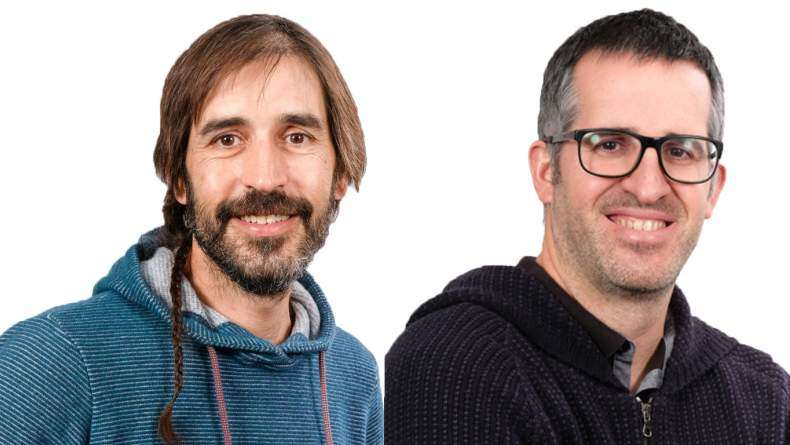BCMaterials Fortnightly Seminar #63: Irati Rodrigo & Imanol Landa

IRATI RODRIGO
(BCMATERIALS)
The design of a new AC magnetometer
Magnetic hyperthermia is a cancer therapy, where magnetic nanoparticles (MNP) placed inside the tumour act as heat sources activated by an externally applied magnetic field. These nanoparticles increase the temperature of the tumour cells causing the destruction of the tumour. One of the most important parameters of MNP used in magnetic hyperthermia is their specific absorption rate (SAR), which is the absorbed energy per unit of nanoparticle mass. Our group has developed an accurate AC magnetometer, which allow the quantification of SAR. This magnetometer calculates the SAR measuring the dynamic magnetization with two pick up coils. SAR is obtained from the integral of the dynamic magnetization vs the applied magnetic field (generated by an inductor). This AC magnetometer works in a wide frequency range of AC magnetic field (149–1030 kHz) and with large field intensity: up to 35 kA m−1 at low frequencies and up to 22 kA m−1 at high frequencies (above 1 MHz). The main aim of this these is to design and built a new AC magnetometer that will work in higher field intensities and add a temperature controller of the sample. This will allow us to measures SAR in different temperature, which is very important to study new non invasive thermometry methods in order to measure the temperature of the tissue during the treatment. Two new AC magnetometers have been designed and studied for this purpose. I have simulated the magnetic field and dissipated power of the inductor using Finite element method (FEM) variating the parameters of the inductor, and analysing the result I have choose the best design with the optimal parameters.IMANOL LANDA
(BCMATERIALS)
Electrochemical processes and discharge product characterization in non-aqueous Na-O2 batteries
The success of the electric vehicles (EVs) relies on the development of energy storage systems capable of providing a large driving ranges. Sodium-oxygen (Na-O2) batteries arise as a promising technology which improves the energy density provided by the currently market-dominating lithium-ion batteries (1100-1600 vs. 75-200 Wh kg-1, respectively). In this presentation I will firstly describe the basics on the operation of Na-O2 batteries. After that, I will show some electrochemical and materials characterizations experiments carried out during my PhD in order to give evidence of the processes occurring in the electrochemical cell.Related news
María Calles, nueva doctora de BCMaterials
Queremos felicitar a María Calles García por haber obtenido su doctorado en Ciencia y Tecnología de Materiales por la UPV/EHU. El 4 de diciembre María realizó una brillante defensa de su tesis...Charla invitada con investigadores del Instituto de Microelectrónica de Barcelona (3 de diciembre)
El próximo 3 de diciembre, a partir de las 12:00 en el auditorio Martina Casiano de Leioa, BCMaterials recibirá a los investigadores titulares del Instituto de Microelectrónica de Barcelona (IMB-CNM...Charla invitada con Liu Yao sobre baterías de metal-litio (2 de diciembre)
El próximo lunes 2 de diciembre, Liu Yao, profesor del Shanghai Institute of Applied Physics presentará una charla invitada en BCMaterials titulada ‘Li Metal Batteries: From Liquid to Solid-State’....Éxito del workshop anual de BCMaterials, dedicado a materiales críticos
La exitosa edición 2025 del workshop anual de BCMaterials reunió el pasado 19 de noviembre en Leioa a un centenar de asistentes para examinar el estado del arte y debatir sobre los materiales...



